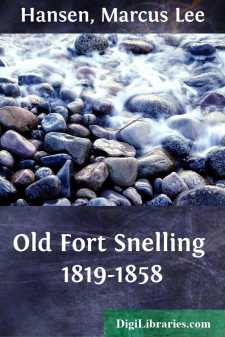Categories
- Antiques & Collectibles 13
- Architecture 36
- Art 48
- Bibles 22
- Biography & Autobiography 813
- Body, Mind & Spirit 142
- Business & Economics 28
- Children's Books 17
- Children's Fiction 14
- Computers 4
- Cooking 94
- Crafts & Hobbies 4
- Drama 346
- Education 46
- Family & Relationships 57
- Fiction 11829
- Games 19
- Gardening 17
- Health & Fitness 34
- History 1377
- House & Home 1
- Humor 147
- Juvenile Fiction 1873
- Juvenile Nonfiction 202
- Language Arts & Disciplines 88
- Law 16
- Literary Collections 686
- Literary Criticism 179
- Mathematics 13
- Medical 41
- Music 40
- Nature 179
- Non-Classifiable 1768
- Performing Arts 7
- Periodicals 1453
- Philosophy 64
- Photography 2
- Poetry 896
- Political Science 203
- Psychology 42
- Reference 154
- Religion 513
- Science 126
- Self-Help 84
- Social Science 81
- Sports & Recreation 34
- Study Aids 3
- Technology & Engineering 59
- Transportation 23
- Travel 463
- True Crime 29
Old Fort Snelling 1819-1858
Categories:
Description:
Excerpt
AUTHOR'S PREFACE
The position which the military post holds in western history is sometimes misunderstood. So often has a consideration of it been left to the novelist's pen that romantic glamour has obscured the permanent contribution made by many a lonely post to the development of the surrounding region. The western fort was more than a block-house or a picket. Being the home of a handful of soldiers did not give it its real importance: it was an institution and should be studied as such. Old Fort Snelling is a type of the many remote military stations which were scattered throughout the West upon the upper waters of the rivers or at intermediate places on the interminable stretches of the westward trails.
This study of the history and influence of Old Fort Snelling was first undertaken at the suggestion of Dr. Louis Pelzer of the State University of Iowa, and was carried on under his supervision. The results of the investigation were accepted as a thesis in the Graduate College of the State University of Iowa in June, 1917. Upon the suggestion of Dr. Benj. F. Shambaugh, Superintendent of The State Historical Society of Iowa, the plan of the work was changed, its scope enlarged, many new sources of information were consulted, and the entire manuscript rewritten.
Connected with so many of the aspects of western history, Old Fort Snelling is pictured in accounts both numerous and varied. The reports of government officials, the relations of travellers and explorers, and the reminiscences of fur traders, pioneer settlers, and missionaries show the Fort as each author, looking at it from the angle of his particular interest, saw it. These published accounts are found in the Annual Reports of the Secretary of War, in the Annual Reports of the Commissioner of Indian Affairs, and in the works of travellers and pioneers. Many of the most important sources are the briefer accounts printed in the Minnesota Historical Collections. The author's dependence upon these sources of information is evident upon every page of this volume.
But not alone from these sources, which are readily accessible, is this account of the Old Fort drawn. A half-burned diary, the account books of the post sutler, letter books filled with correspondence dealing with matters which are often trivial, and statistical returns of men and equipment are sources which from their nature may never be printed. But in them reposes much of the material upon which this book is based. The examination of all the documents which offered any prospect of throwing light upon the subject was made possible for the author as Research Assistant in The State Historical Society of Iowa. And in this connection I wish to express my appreciation for the many courtesies which I have received from those in whose custody these sources are kept. To Dr. Solon J. Buck, Superintendent of the Minnesota Historical Society and the members of the library staff of that Society I am indebted for many kindnesses. Dr. M. M. Quaife, Superintendent of the State Historical Society of Wisconsin, placed at my disposal thousands of sheets of transcripts made from the records of the Indian Department at Washington and kept in the library of the Historical Society at Madison. At the Historical Department of Iowa at Des Moines, and in the library of the Kansas State Historical Society at Topeka opportunity was granted to examine valuable manuscripts. General H. P. McCain, Adjutant-General of the United States, had a search made of the records on file in the archives of the War Department at Washington, and such papers as dealt with Fort Snelling were consulted by the author.
My fellow workers on the staff of The State Historical Society of Iowa have often aided me with suggestions and criticisms. To the Superintendent of the Society, Dr. Benj. F. Shambaugh, I wish to express my appreciation not only for the advice, encouragement, and inspiration which he freely gave, but also for the willingness with which he made possible the investigation of every clue to sources of information by correspondence or by personal visit. Moreover, the manuscript has been carefully edited by him. The task of seeing the work through the press has been performed by Associate Editor Dr....


